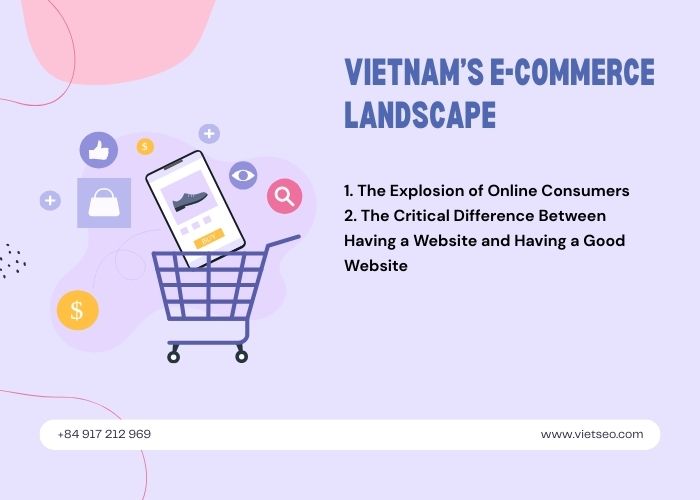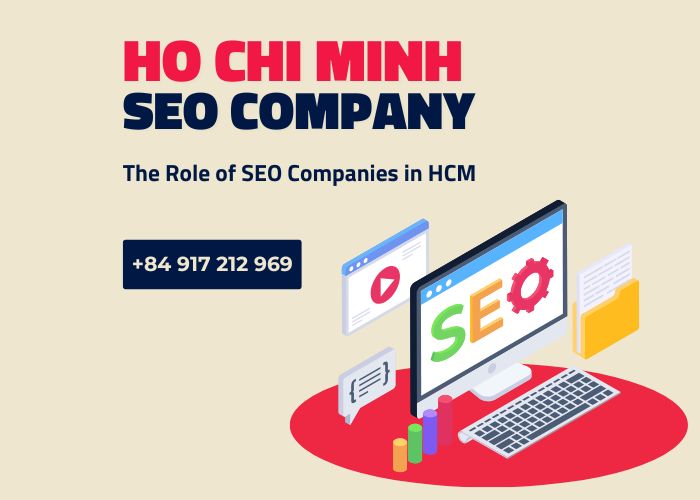What is SEO?
Introduction to SEO
SEO is the process of optimizing a website's content and structure to improve website ranking on search engines like Google, Bing, and Yahoo. The primary goal of SEO is to help websites achieve higher positions in search results, attract organic traffic, and increase conversion opportunities.
As the internet continues to evolve, SEO has become an essential part of online marketing strategies for businesses. A well-optimized website can reach the right audience, enhance brand credibility, and drive sustainable growth.
Why is SEO Important? From Viet SEO's perspective
In today’s digital landscape, having a beautifully designed website isn’t enough—if people can’t find it, it won’t deliver results. That’s where SEO comes in. Search Engine Optimization helps improve your website’s visibility on platforms like Google, driving organic traffic and increasing credibility. Viet SEO agency emphasizes that a strong SEO strategy is essential for long-term online growth, brand trust, and staying competitive in any industry.
1. Increase Organic Traffic
Unlike paid advertising (Google Ads, Facebook Ads), SEO helps attract visitors naturally without paying for each click. A high-ranking website on Google can receive thousands of daily visits at no extra cost.
2. Build Credibility and Brand Authority
Users tend to trust websites that appear at the top of search results. If your website ranks in Google’s top three, customers are more likely to perceive your content and services as high-quality.
3. Boost Conversion Rates
SEO not only increases traffic but also optimizes user experience (UX) to improve conversion rates. A well-optimized website typically has fast loading speeds, a user-friendly interface, and valuable content—all of which encourage users to take desired actions (purchasing, filling out a form, signing up, etc.).
4. Stay Competitive
In the online business landscape, if you don't optimize for SEO, your competitors will. If they rank higher on Google while you don’t, you risk losing a significant number of potential customers.
How Google Ranks Websites
Google uses a complex algorithm with hundreds of ranking factors to determine which websites appear at the top of search results. These factors include content quality, page speed, mobile-friendliness, backlinks, and user experience. VietSEO company helps businesses understand and apply these ranking signals effectively, ensuring their websites meet Google's standards and achieve higher visibility in search results.
Google uses complex algorithms to evaluate and rank websites based on various factors, including:
- Content Quality – Content should be useful, valuable, and relevant to users' search queries.
- Keywords – Google scans content to determine its relevance to search queries.
- Backlinks – Links from other websites to yours help build credibility.
- User Experience (UX) – Google evaluates user interactions, including time spent on a page, bounce rate, page loading speed, etc.
- Technical Optimization – Websites with clean code, mobile-friendly design, and SEO-friendly URLs have an advantage.
Viet SEO categorizes SEO into the following types
Viet SEO categorizes SEO into the following types to help businesses understand and apply the right strategies for sustainable growth. With years of experience in optimizing websites across various industries, Viet SEO company emphasizes the importance of a balanced approach—combining On-page SEO, Off-page SEO, and Technical SEO—to maximize visibility, improve user experience, and boost search engine rankings effectively.
1. On-Page SEO
On-page SEO focuses on optimizing website content and source code. Key elements include:
- Content Optimization – Articles should include primary and secondary keywords, engaging titles, and valuable information.
- Title Tags – Should contain the main keyword and be under 60 characters.
- Meta Descriptions – Help users understand page content and improve click-through rates.
- URL Optimization – Should be short, keyword-rich, and free of special characters.
- Image Optimization – Use ALT tags to help Google understand image content.
- Internal Linking – Helps guide users and increase time spent on the website.
2. Off-Page SEO
Off-page SEO involves external activities to enhance website authority and visibility:
- Building High-Quality Backlinks from reputable websites.
- Social Media Marketing to increase engagement and brand awareness.
- Guest Posting (writing articles for other websites) to attract more traffic.
3. Technical SEO
Technical SEO focuses on backend optimizations, including:
- Improving Page Load Speed to reduce bounce rates.
- Ensuring Mobile-Friendly Design, as Google prioritizes mobile-friendly websites.
- Optimizing Robots.txt Files to control Google’s crawling behavior.
- Creating XML Sitemaps to help Google index pages faster.
4. Local SEO
Local SEO helps businesses optimize for location-based searches, ideal for stores, restaurants, and local services. Key factors include:
- Google My Business Optimization – Creating and updating a business profile on Google Maps.
- Local Keyword Optimization – Example: “air conditioner repair service in New York.”
- Customer Reviews on Google Maps and other review sites.
SEO Tools to Enhance Optimization - To the best of Viet SEO's knowledge
Several tools can help analyze and improve SEO performance, including:
- Google Search Console – Tracks website performance on Google.
- Google Analytics – Analyzes traffic and user behavior.
- Ahrefs – Monitors backlinks and keyword rankings.
- SEMrush – Provides competitor analysis and keyword research.
- Yoast SEO (for WordPress) – Simplifies content optimization.
SEO Trends in 2025
As search engines continue to evolve, staying ahead of the latest SEO trends is crucial for maintaining online visibility and competitiveness. In 2025, factors like AI-generated content, voice search, user experience, and video SEO are expected to play even bigger roles in how websites are ranked. Viet SEO explores these emerging trends and provides actionable insights to help businesses adapt their strategies and thrive in the ever-changing digital landscape.
SEO is constantly evolving with Google's algorithm updates. Here are key trends for 2025:
1. AI and SEO
Google increasingly uses artificial intelligence (AI) to understand content context. Tools like Google BERT and RankBrain assess content quality based on meaning rather than just keywords.
2. Voice Search Optimization
With the rise of voice assistants like Google Assistant and Siri, many users conduct searches via voice. Content should be optimized for natural, conversational queries.
3. Video SEO
YouTube is the second-largest search engine in the world. Optimizing videos for SEO can significantly increase visibility.
4. User Experience (UX) is More Important Than Ever
Google prioritizes websites with excellent UX, including fast load times, intuitive interfaces, and valuable content.
Conclusion
SEO is a long-term strategy that helps websites rank higher on Google, attract potential customers, and increase revenue. To succeed in SEO, businesses must stay updated with trends, optimize content, and enhance user experience. When done correctly, SEO—especially when supported by expert services like Viet SEO - can provide sustainable benefits and drive strong business growth in the digital world.



